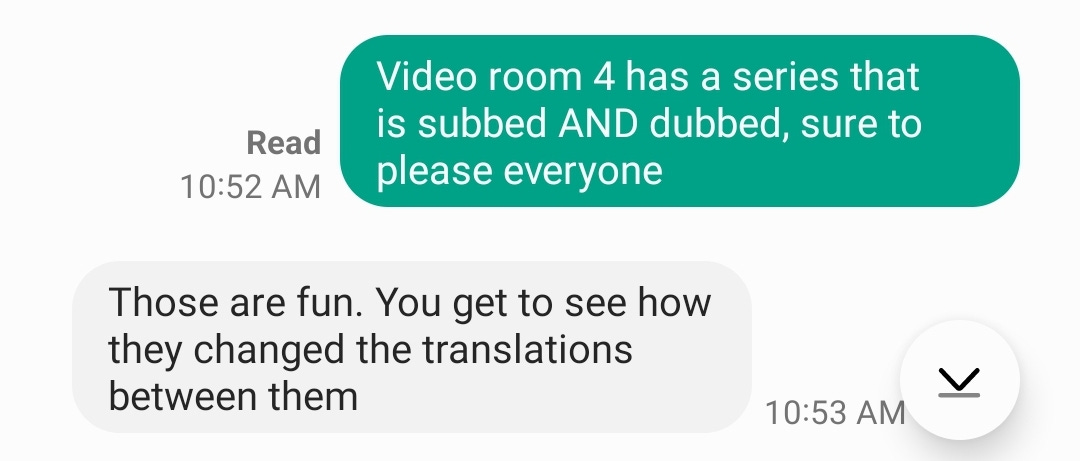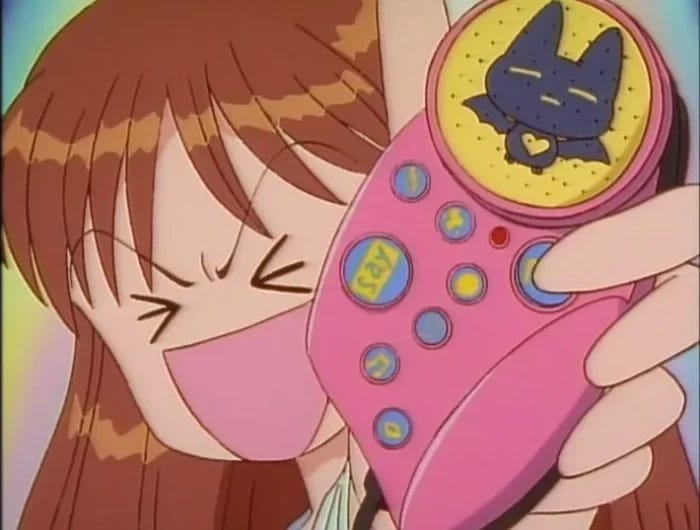“Subbed or dubbed?” It’s a classic question in certain film fandoms, and if you answer “dubbed,” you may be snubbed.
The longer version of the question is “Do you prefer your foreign-language TV and movies in the original language with subtitles, or with the dialogue dubbed over into English?” This debate affects any foreign-language entertainment, but it tends to be sharpest when concerning Japanese anime, which attracts younger and more opinionated types than, say, German expressionist cinema.
The arguments for subbing are simple. The original voice acting is often much better. Even when you can’t understand a word of Japanese, the cadences come through. And some fans do seek to learn the original language; for some of them, subtitles are a backup rather than a necessity. (Most of what Japanese I do know, I learned from anime fans who dropped it into conversation.)
And besides, subtitles are as close as most English-speakers can get to the experience of watching the story unaltered and unfiltered, as the creators intended.
So you may conclude subbing is laughably, obviously superior to dubbing in all cases. I usually opt for it. And I’d say it’s the way to bet—but not always the winner. Some dubbing performances defy the odds, especially in comedy. The norms of what an audience finds funny aren’t as easy to translate as drama, fantasy, or sci-fi, and you can only read so many footnotes explaining foreign-language puns.
Continually reading the screen is a constant little bit of extra work. If you’re watching in a distracting setting, it can be a deal-breaker. People consume media in many different ways. If you have a show on in the background while you’re cooking, foreign-language audio might be too much to keep up with.
Finally, dubs can use more words than subtitles, and sometimes they need more words to get the heart of the dialogue across.
This debate’s changed little in the forty years or so that anime has had an English-speaking audience. So when I peeked into the anime rooms at Katsucon yesterday, I was amused to find TV episodes that had been subtitled and dubbed—and the subtitles often didn’t align with the dubbing. I was sure this would inflame both sides, but Janice gave me a new perspective on the matter.
Thus encouraged, I gave it a go, watching the classic Kodocha and the newly dubbed Lovely★Complex in this “s’dubbed” format. Keeping up with two distinct dialogue tracks was challenging at first, but worth it, as they offered up separate jokes and nuances. I savored the improv energy.
But I wasn’t wrong about these differences churning up the debate. Lovely★Complex has sub-dub controversies raging right now which would take me too long to address beyond saying, “Call trans people what they want to be called.” Ghost Stories, more or less the anime Scooby-Doo with real ghosts, has a famously irreverent dub—some would say “notoriously.” The dub adds swearing, sexuality, and other “the more offensive, the better!” comedy to the original straightforward script, and surely among those it offends are anime purists. Even so, many fans love it.
In such controversial cases, watching both subs and dubs at once means you get to decide for yourself. That’s trickier to do in the streaming era than when DVD viewing was the default. But going the extra mile to get the best experience should appeal to subtitling fans, and twisting the original to get maximum entertainment should please dub-listeners. And both should appreciate one extra benefit—the feeling of being smarter about their viewing than everyone else.
Really, isn’t that what it’s all about?





Sounds better than dubtitling at least.
Every debate old is new again, huh?